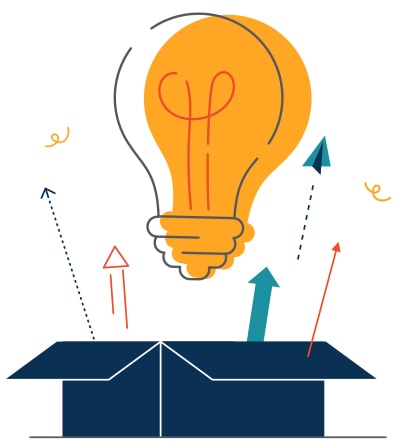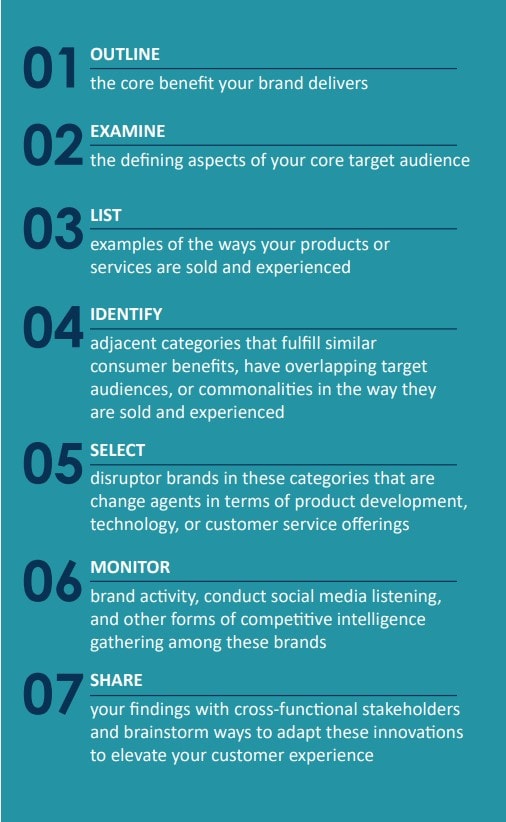5 CX Strategies to Strengthen Your Business in an Economic Downturn

The 5 CX Strategies:
- Fearlessly Address Attrition & Churn Head On
- Keep Acquisition Efforts Customer Centric
- Focus CX Spending on Customer Retention
- Think Outside the CX Innovation Box
- Consider Expanding into New Markets
In a recession or economic downturn, there are winners and there are losers.
When times get tough, “losing” businesses tend to slash budgets, scrap innovation, defer expansion, and pause all R&D. They default to the old way of doing things because it feels safe and shelve their next great chapter until everything “settles down.”
In contrast, “winning” companies write their next chapter full speed ahead. They start by playing defense, rebalancing their budget and dialing in on their customer experience and retention strategies. Then, they quickly switch to offense and capitalize on the opportunities their counterparts deferred. These “winners” invest (often aggressively) in growth, usually in the form of R&D across the board, innovation, market expansion, and M&A.
What these winning companies understand is that the next great chapter in their story may not always run totally linear with those leading up to it – and that’s okay. In fact, that just might be what makes it great.
If you want to strengthen your business through the next downturn, here are the five CX strategies you should focus on.
Fearlessly Face Attrition & Churn Head On
Consider the following cautionary tale: A large bank loses 50 customers. For a bank of their size, this isn’t a staggering number. However, 50 soon becomes 100 customers the next week, then 500 that month.
In response, the bank doubles down on its acquisition efforts to replace the lost customers, with some success. But, by now it’s a problem that acquisition efforts can’t keep up with. And the bank isn’t clear on why the attrition is happening in the first place, let alone why it’s escalating. By the time they examine their customer journey, it’s too late to replace thousands of lost customers and the bank takes a revenue hit.
Churn, attrition, the pesky thorn in your side – whatever you call it – no one wants to talk about it.
Not enough companies are asking customers, “Why did you leave?” or asking lost opportunities, “Why did you go with [insert competitor here] instead of us?” And these are not exactly comfortable questions. However, asking them can help you target resources where they are most impactful, fuel your growth strategy, and sharpen your competitive edge. It can even reveal weak points in your customer journey, especially if you notice patterns among where, when, or why customers are leaving.
The number one thing you can do to reduce churn is to understand why customers are brand switching. One way to do this is consistently surveying all lost customers about why they left – as soon as they leave – and spending some quality time analyzing customer data. This is traditionally called win-loss analysis. And companies that do it are more likely to exceed their sales goals, retain their customers, and increase their market share.
Questions you should consider in your attrition & win-loss research:
-
- What aspects of the customer experience are most important?
- What product or service benefits/features are they most interested in? Digital convenience? Customer service? Cost?
- What pain points are customers experiencing? Which pain point is triggering them to leave?
- What type of customers are most at risk of leaving? What is the relationship between what’s most important to these customers and the pain points they are experiencing?
- Which competitors do the best job of retaining customers? What aspects of their experience are contributing to their strengths?
- What opportunities exist to enhance your product or service offerings to reduce attrition?
These questions will help you get to the heart of why you may be losing customers and act quickly to reduce churn.

You can still build relationships with customers old & new, even during a recession.
The secret to success?
Keep Acquisition Efforts Customer Centric
If you want to continue acquiring new customers during a recession, you should pay extra special attention to your customer experience strategy. There’s a reason Forbes calls CX the “lifeblood of companies,” saying it’s “the biggest driver of loyalty and can reduce the cost of acquiring new customers. Those loyal customers and a customer-centric reputation can be your saving grace to keep your business afloat.”
We get it, the temptation to cut down on marketing and CX activities and spending during a downturn may be strong. However, continuing to critically assess your CX and maintaining a potent customer-centric mindset will make for a much more recession-proof acquisition strategy.
Number one, it will help protect your reputation. But good CX will also promote positive word of mouth, leading to more affordable acquisition of new ideal customers. A sinking economy often changes your customers’ needs, perceptions, and general outlook. Investing in understanding them better at this time will help you easily appeal to and attract more people like them, even during a downturn. It can also help you provide a more personalized customer experience during times when it may be needed more than ever.
So, what might a customer-centric experience look like in this environment?
- Providing reassurance via marketing communications
- Offering service and/or cost flexibility when possible
- Touting above-and-beyond customer service
- Continuing to present a clear, consistent point of differentiation in your brand messaging and advertising
- Increasing personalization customer service, product recommendations, and/or messaging personalization
One thing to keep in mind right now is that many business leaders default to upping sales and acquisition efforts during a downturn, which means your competition is coming after your customers harder than ever. So, while the grind never stops, your retention efforts should pull more focus than acquisition during down markets. Which brings us to our next point…
Focus CX Spending on Customer Retention
You’ve likely heard that it costs 5x more to win over a new customer than to keep (and upsell) an existing one. This holds true during normal economic times and it’s on steroids during a recession.
The good news is, retention is less vulnerable than acquisition to the fluctuations of a bad economy. In fact, 90% of reps on high-performing sales teams say their leadership encourages them to prioritize long-term customer relationships over short-term wins during tough times. Often, downturns will make or break customer loyalty, depending on the company’s commitment to CX. But CX leaders who remain committed to providing an exceptional customer experience, no matter the economic conditions, tend to come out on top time and again.
For these reasons and many more, it pays to evolve and lock in your retention strategy ASAP. You can start by finding out which of your customer segments are most vulnerable to churn. This is something we help our clients do during both good times and bad, so they can pivot their business strategy with ease when needed.
Once you identify these high-risk segments, look for similarities across their pain points. Doing this can help you prioritize the pain points and customer experience initiatives that will be the most impactful to the highest number of customers.
For example, banks and lenders will often work with those impacted by job loss or, most recently, the pandemic to pause loan payments without penalty. This kind of flexibility shows a vulnerable customer that they are more than just a number and can quickly turn a lukewarm customer into an extremely loyal one.
Think Outside the CX Innovation Box
One of the biggest mistakes an established company can make during a downturn or recession is to stop innovating and investing in R&D. And while innovation might look like new-and-improved products, upgraded technologies, streamlined processes, and fresh service offerings, you can also innovate without blowing your CX budget. In fact, a downturn is a great time to change the game with simple, affordable solutions for your customers – and some of these solutions can be found within elements of your existing customer experience. As MTV Co-Founder Tom Freston once said, “Innovation is taking two things that already exist and putting them together in a new way.”
CX Innovation from your existing offerings can be made easier if you have a CX, BX, and/or market research program to give you a leg up and inform your way forward. Maybe you identify an existing customer need and rally employee groups around finding a new, inventive way to serve it. Perhaps you take cues from a recent competitor innovation, analyze its potential benefits to your customers (by cross referencing with your CX data), and re-imagine ways of retrofitting the innovation into your business to better serve them. Or, maybe you find more lower-cost, out-of-the-box ideas in our Innovator’s Guide to Customer Experience (wink, wink).
Focusing on innovations taking place within and beyond your industry is another great way to inspire your own efforts.
For example, Apple’s launch of their App Store during the 2008 recession is a classic example of how innovations from one brand impacted customer experience standards in nearly every industry. Today, mobile apps are ubiquitously used to simplify experiences like grocery shopping, payment processing, and anything from conducting banking transactions to tracking sleep patterns.
And Apple wasn’t the only brand leveraging recessionary pressures into innovation opportunities. Uber ridesharing and Air BnB launched in the thick of the 2008 recession to offer cheaper travel options during tough economic times.
Check out our innovation research framework in the box below to build out your next big idea so you can join the ranks of companies who worked smarter, not harder, to innovate during downturns.

Consider Expanding into New Markets
“Expand into new markets? In this economy?!” Yep, you heard us. Now might be a particularly good time to set your sights on breaking into a new market. And you don’t need to be a huge entity to do it, as long as you’re proactive and position yourself well.
Bain & Company says it best:
“During past recessions, many companies that planned carefully were able to go big with acquisitions as soon as valuations dropped. Acquirers bought new product lines, customer segments or capabilities at lower prices.”
If you’re expanding into new markets or lining up acquisitions, do your (market) research to ensure the ventures are sound, the market conditions are right, and the appetite is healthy for what you offer in the space you’re targeting.
But don’t stop there. You’ll also want to test out consumer perceptions of marketing messages, potential advertising effectiveness, and brand positioning in the new market to set yourself up for success.
Whether you’re expanding into a new market, launching a product line, or acquiring another business capability, it’s critical to maintain intent focus on customer experience throughout any expansion initiative.

Expanding a product line? Breaking into a new market? Lining up an acquisition?
Set yourself up to thrive.
Above All: Tune in to the Voice of Your Customer
Economic downturns can be stressful – there’s no way around that. However, they are also a certainty and an opportunity to strengthen your business and customer relationships. That is, if you decide to own your narrative, pivot your focus where needed, and write your next chapter.
Of course, there’s a very delicate balance between cutting costs to get through today and investing in future growth to thrive post-recession. But companies that choose to seize major growth opportunities during downturns are proven to do better than their rivals on the other side. Those who do this and maintain staunch customer-centricity in their approach give themselves an even bigger competitive advantage.
As you forge ahead in our changing world, remember that the voice of your customer is the most important one. Your customers are the richest source of truth to inform where you take your business, and they will always point you north.

Download The Innovator’s Guide to CX for more strategies to future-proof your business.

